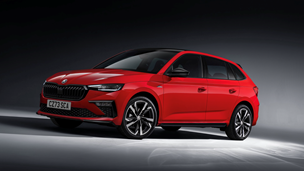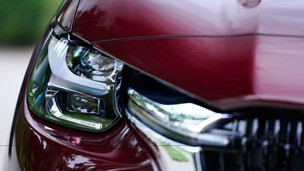The Swift is more than just a supermini for Suzuki. It was the brand’s first global car, its bread and butter for over 30 years and an integral part of Suzuki’s core automotive identity.
The new third-generation model aims to take things to the next level. Suzuki reckons the new Swift has got what it takes to break into the UK’s top ten sellers table and tackle models like the Ford Fiesta, Skoda Fabia and Mazda 2.
But what’s different this time around? Well, with the new Baleno supermini looking after the sensible supermini side of things in the Suzuki range, the Swift has carte blanche to shake things up a bit, with a more daring design and emotional appeal. That much is clear from the outside, with a sharper design that inherits plenty of “Swift-isms” but serves up some new curves and creases too.
There’s even a new interior, new range of engines (including hybrid derivatives) and a new platform, which has it sitting 15mm lower to the ground. In fact, that new platform is shared with the Baleno, although Suzuki has made it clear that the Swift will have a much sportier set-up in order to appeal to a different crowd.
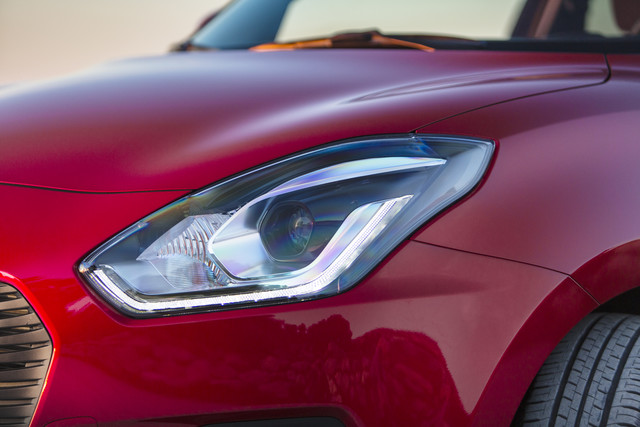
And if its dubstep-fuelled, selfie-adorned press presentation is anything to go by, I think it’s safe to say that Suzuki wants to target the younger demographic.
So, should you go for a Swift over something like a Mazda 2 or Kia Rio?
Performance 4/5
We've tested the 1.0-litre three-cylinder Boosterjet many times before, so we know the peppy little unit can hold its own against other tiny turbos on the market. But what about the hybrid version?
As in the Ignis and Baleno hybrids, the SHVS (Smart Hybrid System by Suzuki) almost takes a backseat to the driving experience, sensibly ticking over and providing an electrical boost where possible - unlike a fully-engaged hybrid system.
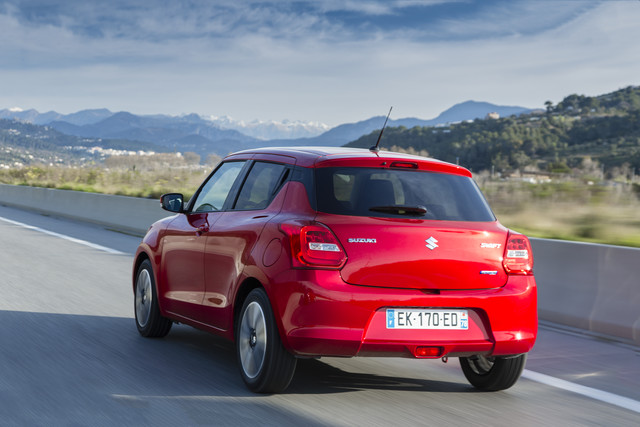
The presence of the mild hybrid system in the Swift is even less noticeable than in its siblings as the Boosterjet manages to still deliver the same spritely character without feeling flattened by eco-conscious tech - which is good news. And the Boosterjet remains the one to go for when it comes to fun factor, with the SHVS derivative taking 10.6 seconds to get from zero to 62mph.
The five-speed manual transmission we tested is snappy enough for quick changes too, although the slightly nippier six-speed auto is tempting.
Ride and handling 4/5
Even though the new Swift sits on the Baleno's platform, miraculously it manages to emulate the personality of the old Swift, which is not a bad thing at all.
The new Swift is happy to be chucked about twisty roads with communicative steering that is light and easy to manoeuvre, yet offers enough feel for enthusiastic driving.
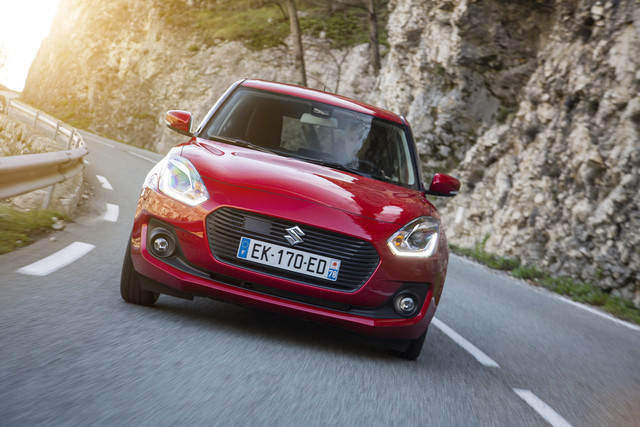
The suspension happily toes the line between business and pleasure as well, being supple enough to trump pot holes and yet taught enough to offer little body roll and decent cornering capabilities. It may not offer the same cornering finesse as a Mazda 2, but what it lacks in sportiness, it makes up for in comfort.
The Swift does jitter when hitting large bumps however and insulation is lacking at motorway speeds, with tyre roar being particularly intrusive.
Interior and Equipment 3.5/5
The Swift has always had a rather bland interior, with its hard plastics and sparse kit making it seem dated when compared to its competition.
Suzuki has clearly taken this into consideration, with a revamped layout that looks much more youthful, with reworked air vents, air con controls, a new flat-bottomed steering wheel, a four-inch LCD display behind the steering wheel and a new seven-inch touchscreen. This touchscreen, which can be used with gloves, offers Android Auto and Apple CarPlay connectivity too. The Swift's interior may still be littered with dark plastics, but it's fresh design helps overcome this.
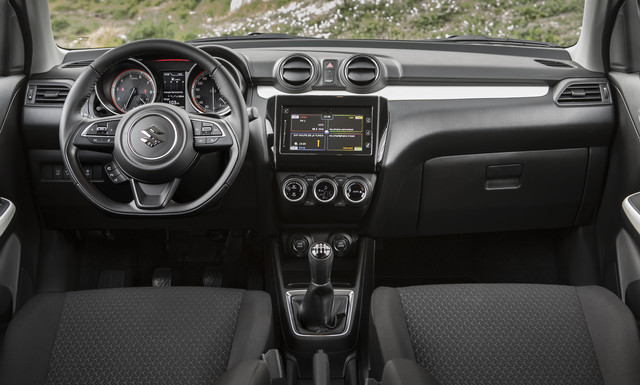
There is a familiar line-up of trim levels on offer: SZ3, SZ-T and SZ5. Our SZ5 test car was equipped with a plethora of nifty gadgets, including sat-nav, automatic air con, Bluetooth, DAB radio, a reversing camera and a series of sophisticated safety features.
Some of these included adaptive cruise control, lane departure warning and Dual Sensor Brake Support, which can apply the brakes automatically if an imminent collision is detected.
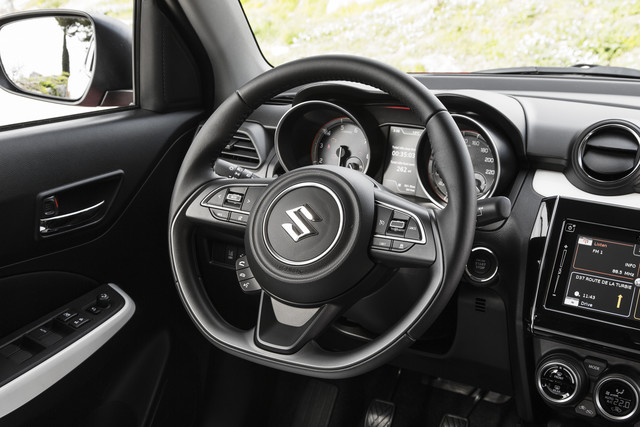
It's worth noting however that all Swift models come generously equipped from entry-level with DAB radio, Bluetooth, air con and LED daytime running lights.
Although the Swift is now 10mm shorter than before, a wheelbase increase of 20mm makes for greater wiggle room in the rear, with plenty of leg room for adults.
The rear seats have also been lowered, making for 23mm more headroom, and it shows - six footers should have no problem getting comfy. The boot has had a bump up in practicality too, with an extra 54 litres on offer, bringing its grand total to 254 litres.
Costs 4/5
UK pricing has not yet been announced for the new Swift, but Suzuki has said that with the three-door model no longer being available, the Swift will not carry its famed £9,000 price tag.
Instead, expect it to be more along the lines of £10,000 - £10,500. Even at that price, the Swift would be much cheaper than most of its supermini competition, including the Ford Fiesta and Mazda 2. The 1.0-litre Boosterjet SHVS we tested is the most efficient Swift model on offer, emitting just 97g/km of CO2 and claiming average fuel economy of 65.7mpg.
This is slightly more efficient than the standard 1.0-litre Boosterjet, which claims 104g/km of CO2 and an average of 61.4mpg (in manual form).
Verdict 4/5
The Swift didn’t really have to change in terms of driving dynamics – and thankfully it hasn’t, much - it is still as characterful and playful as ever. It was in need of a refresh though, especially considering that it wants to topple the top ten table.
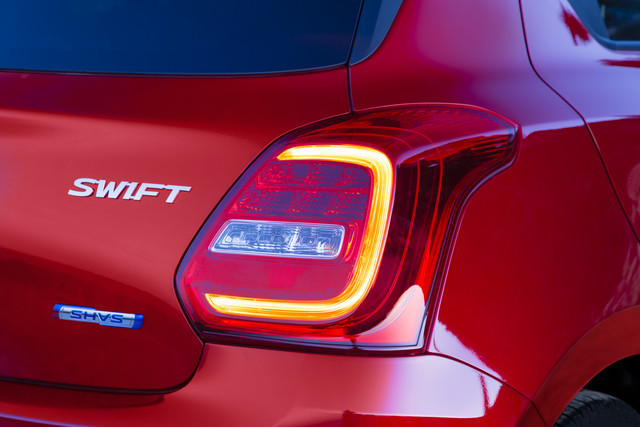
Its fresh interior and exterior will certainly attract younger buyers and for those who are on a tight budget, it will be an extremely tempting proposition, especially when sat next to its pricier Ford, Kia, Mazda and Skoda rivals.
